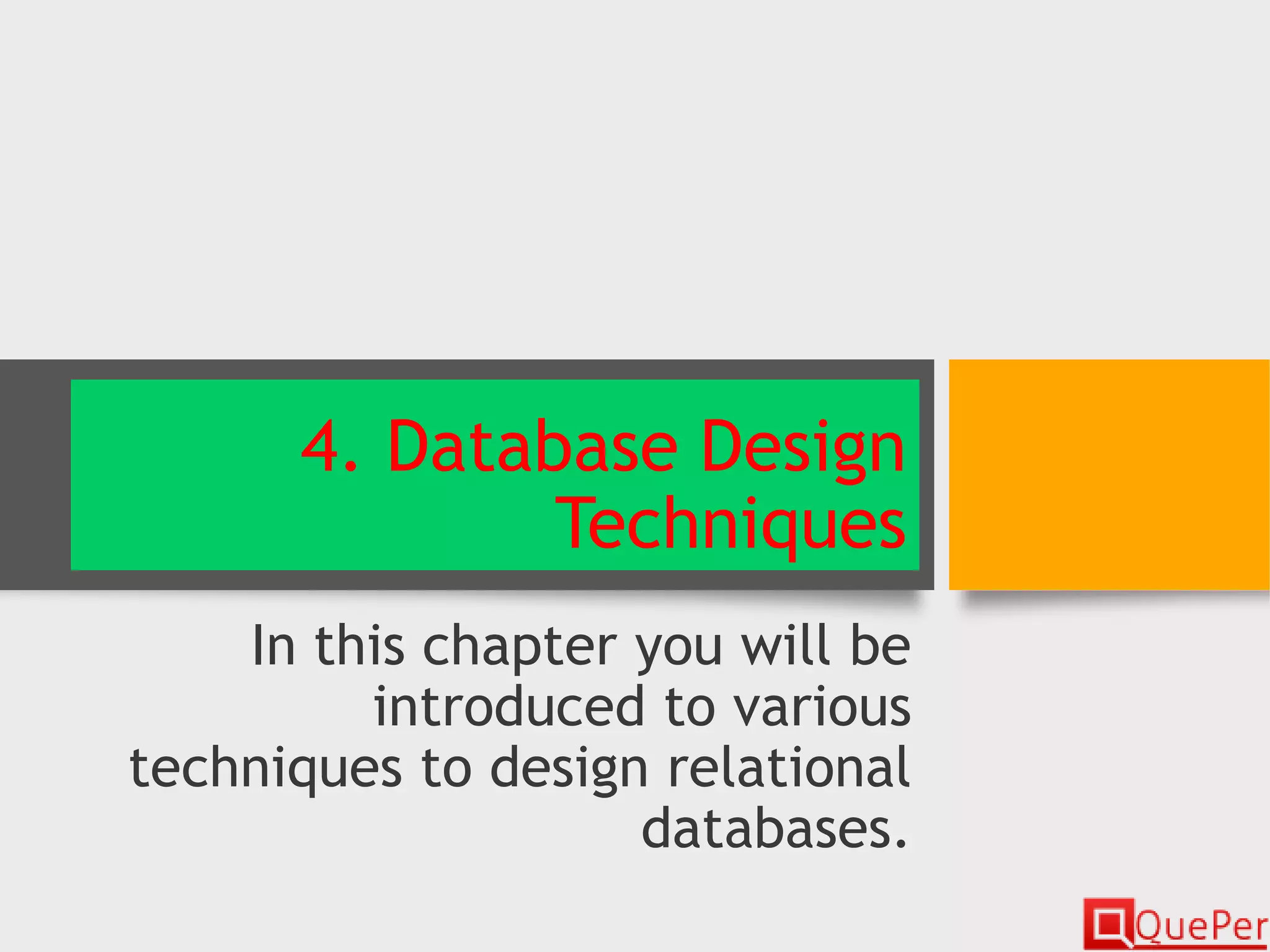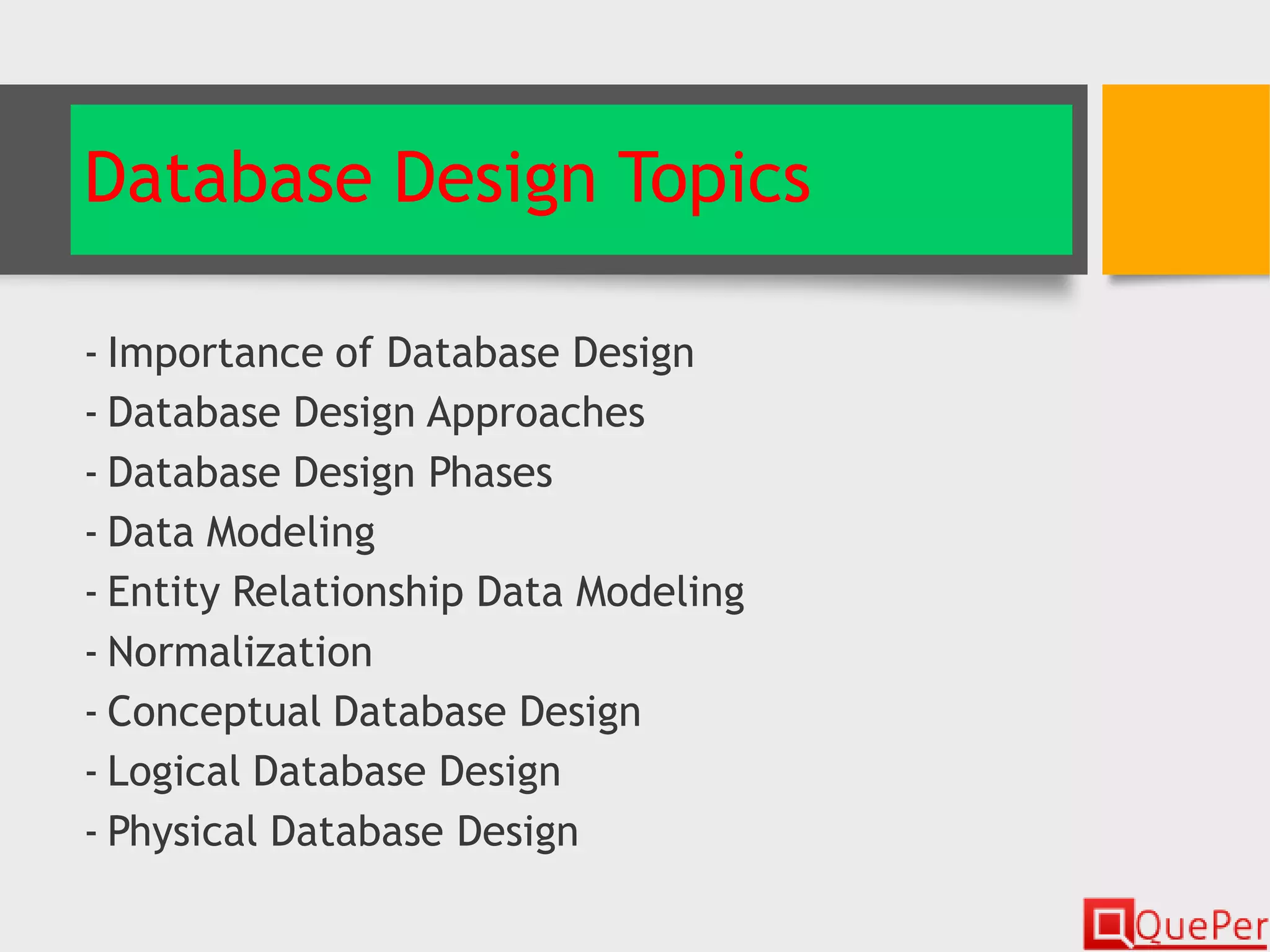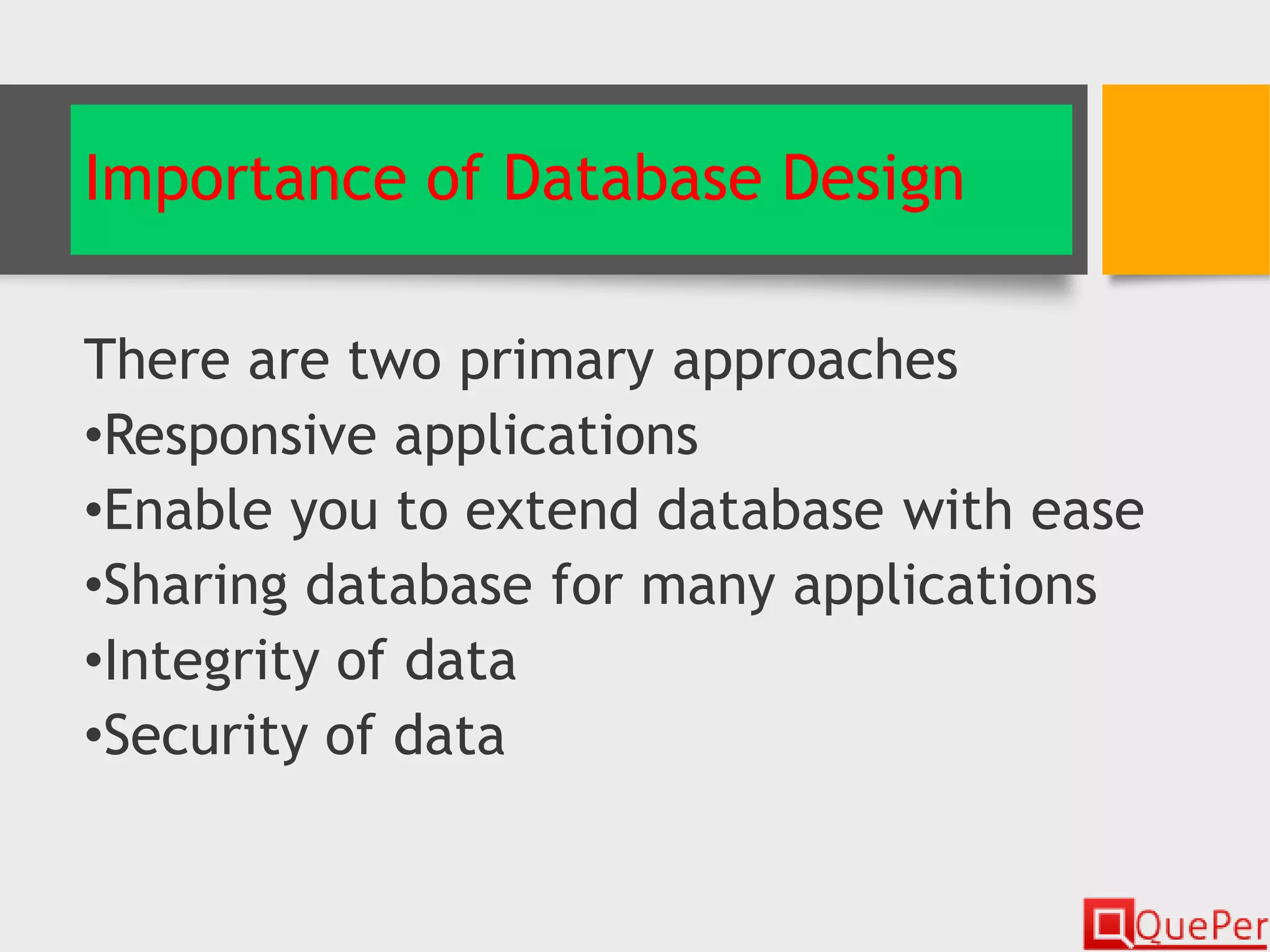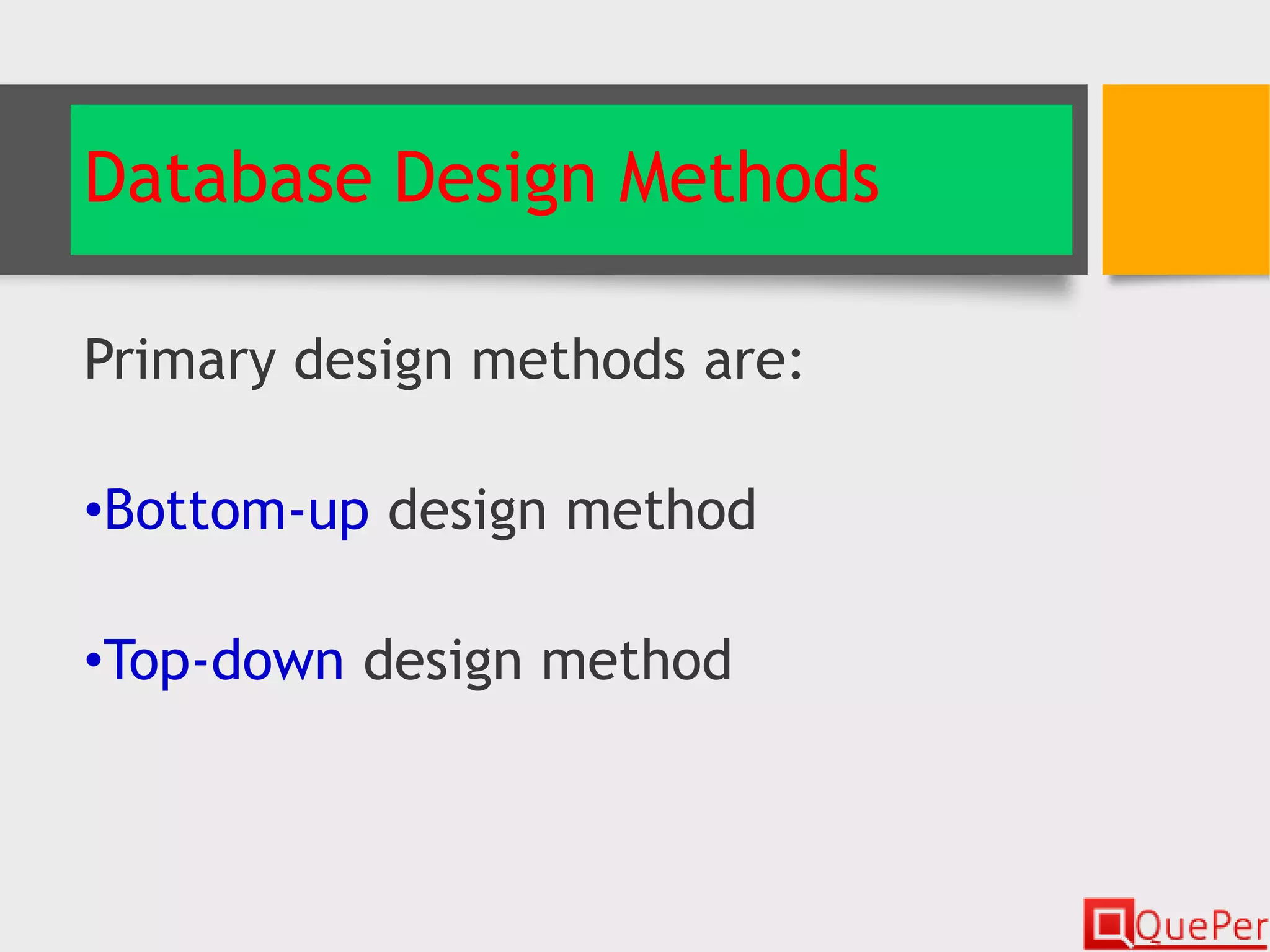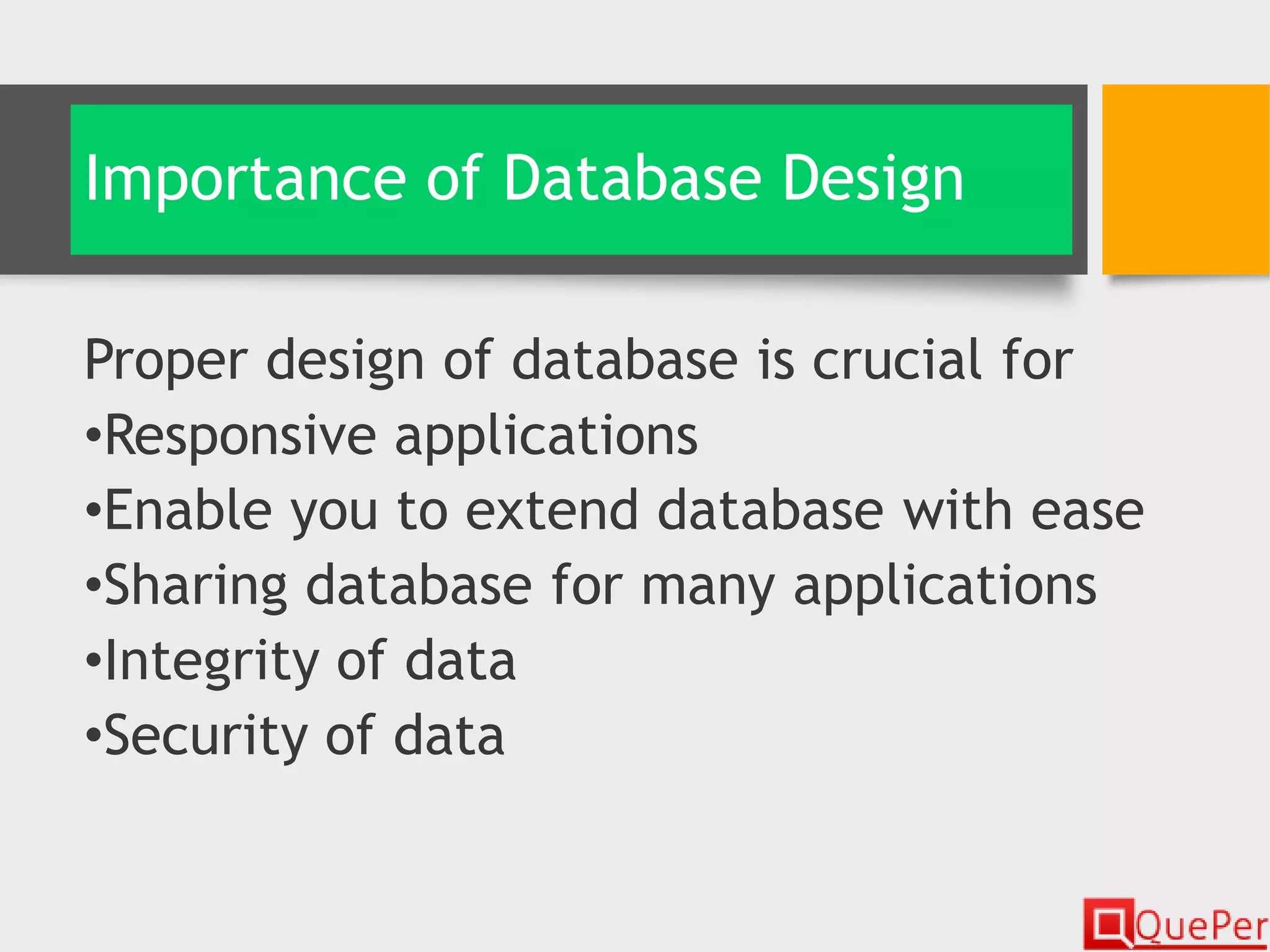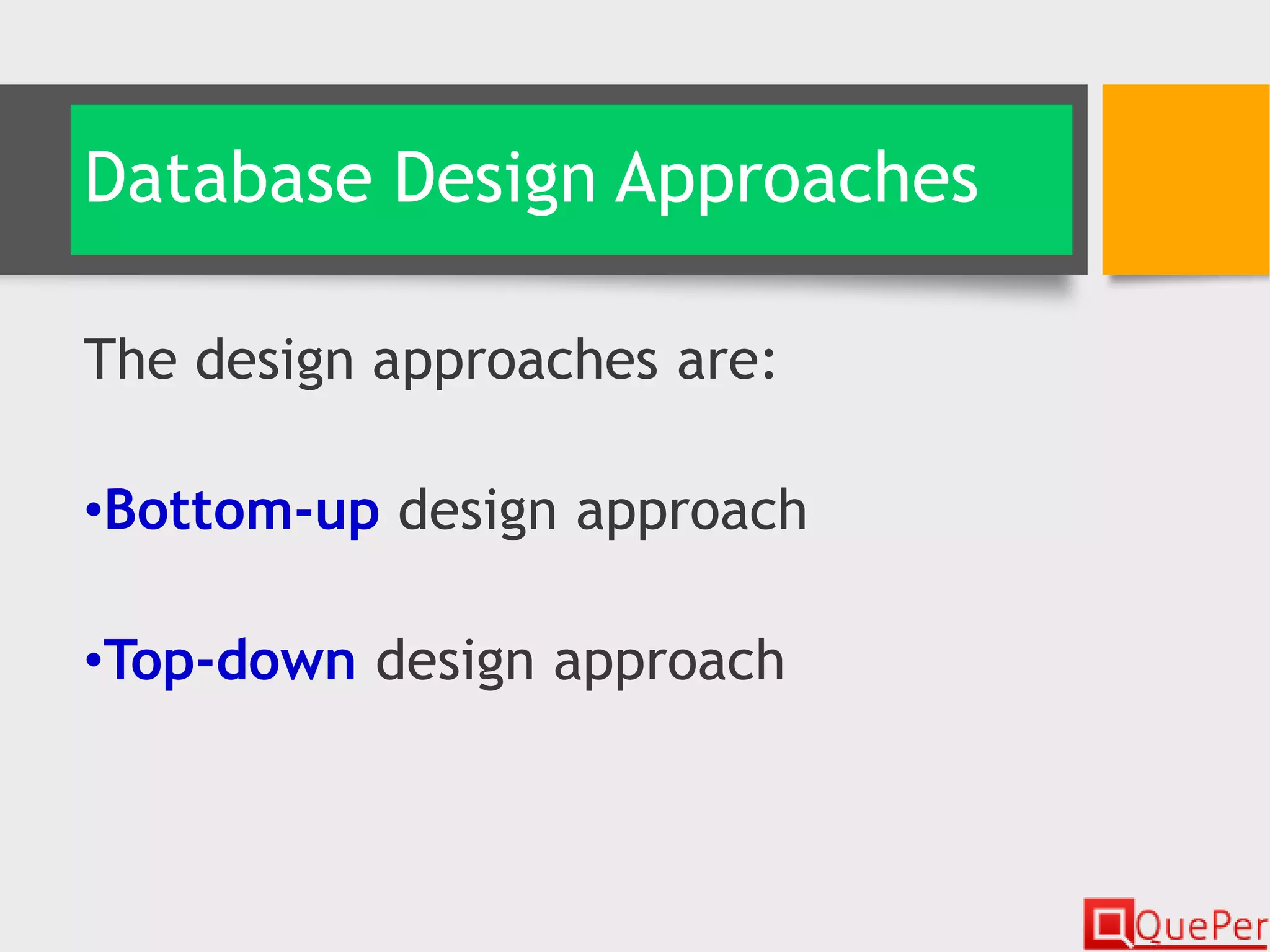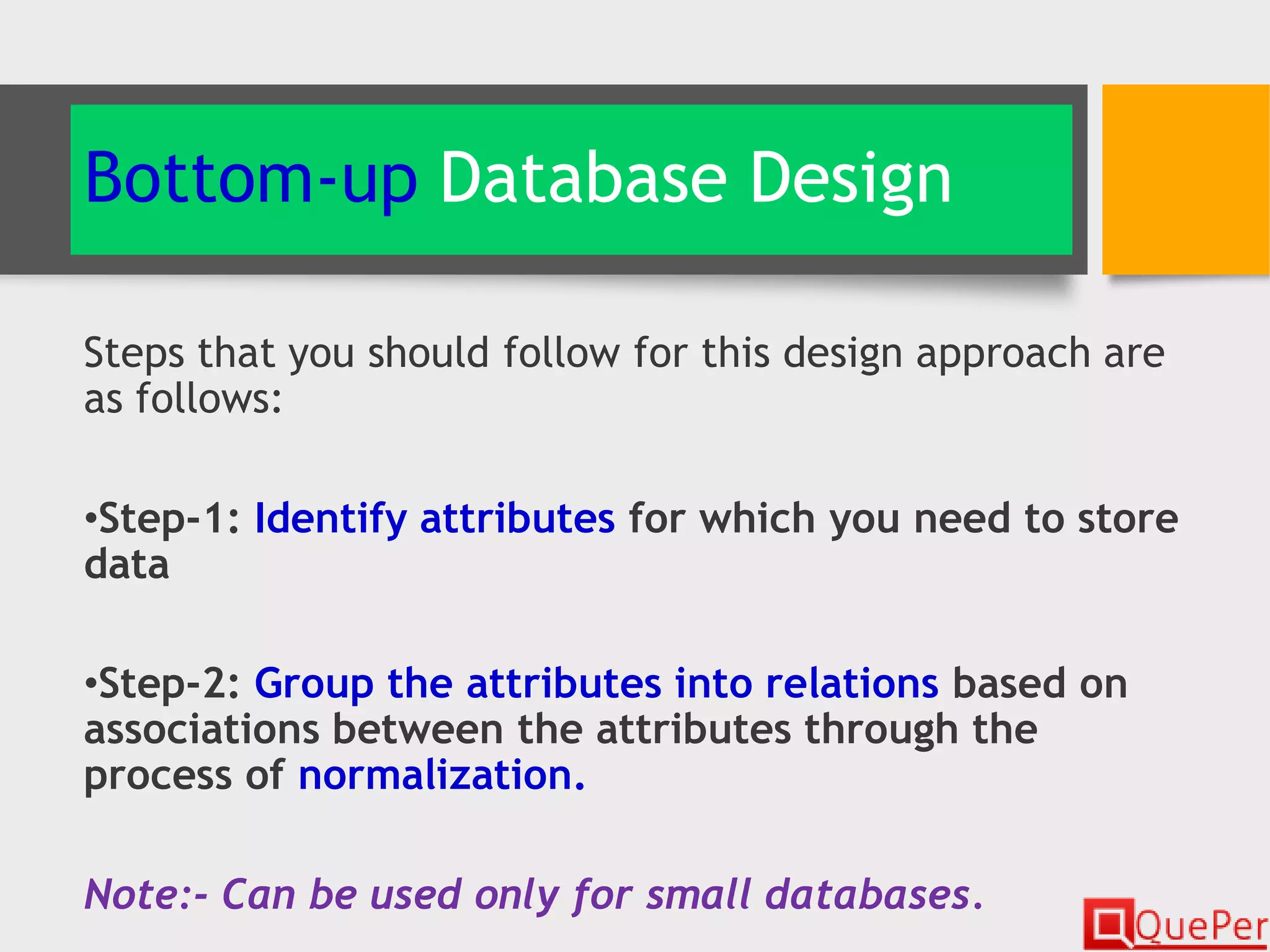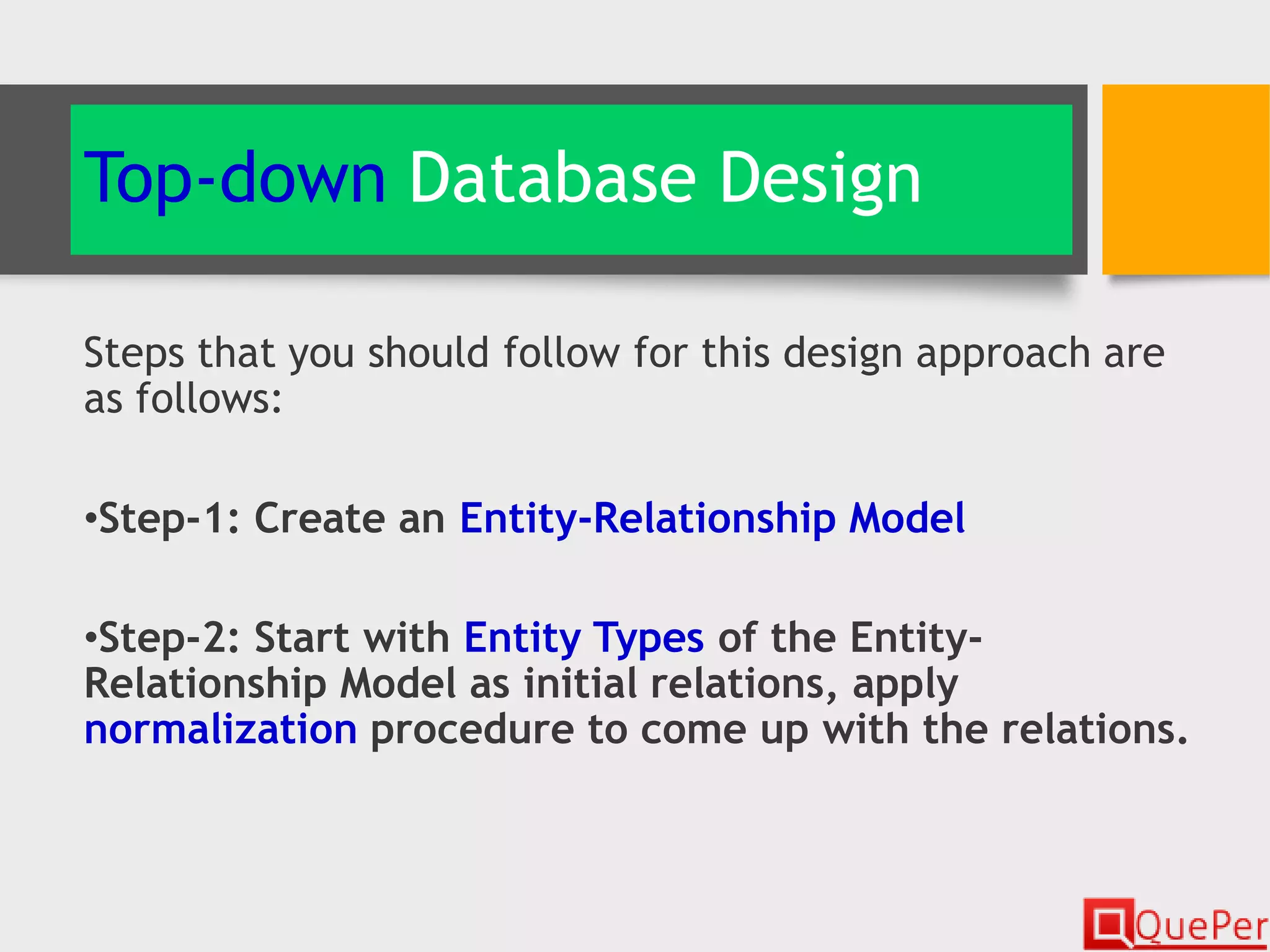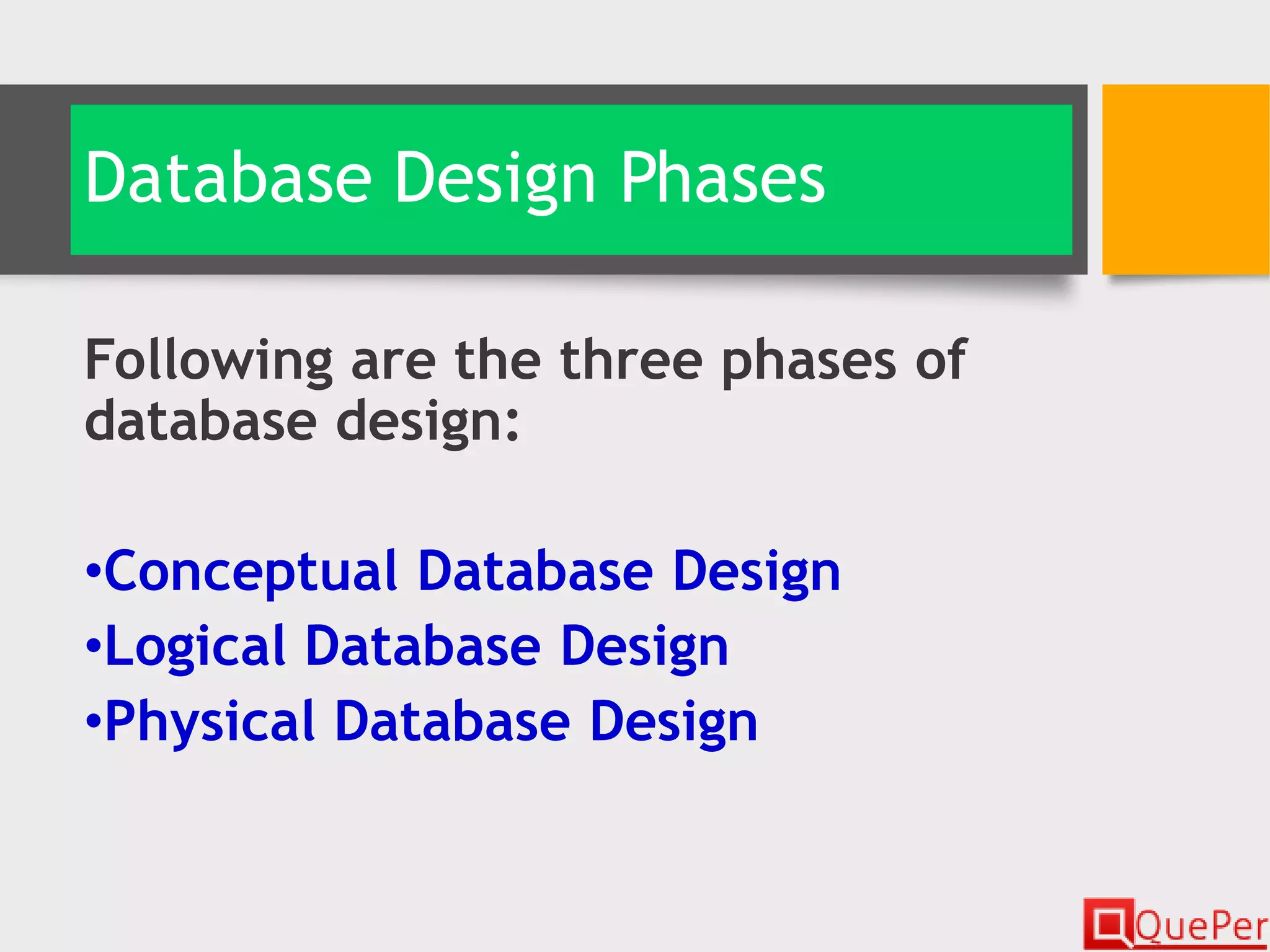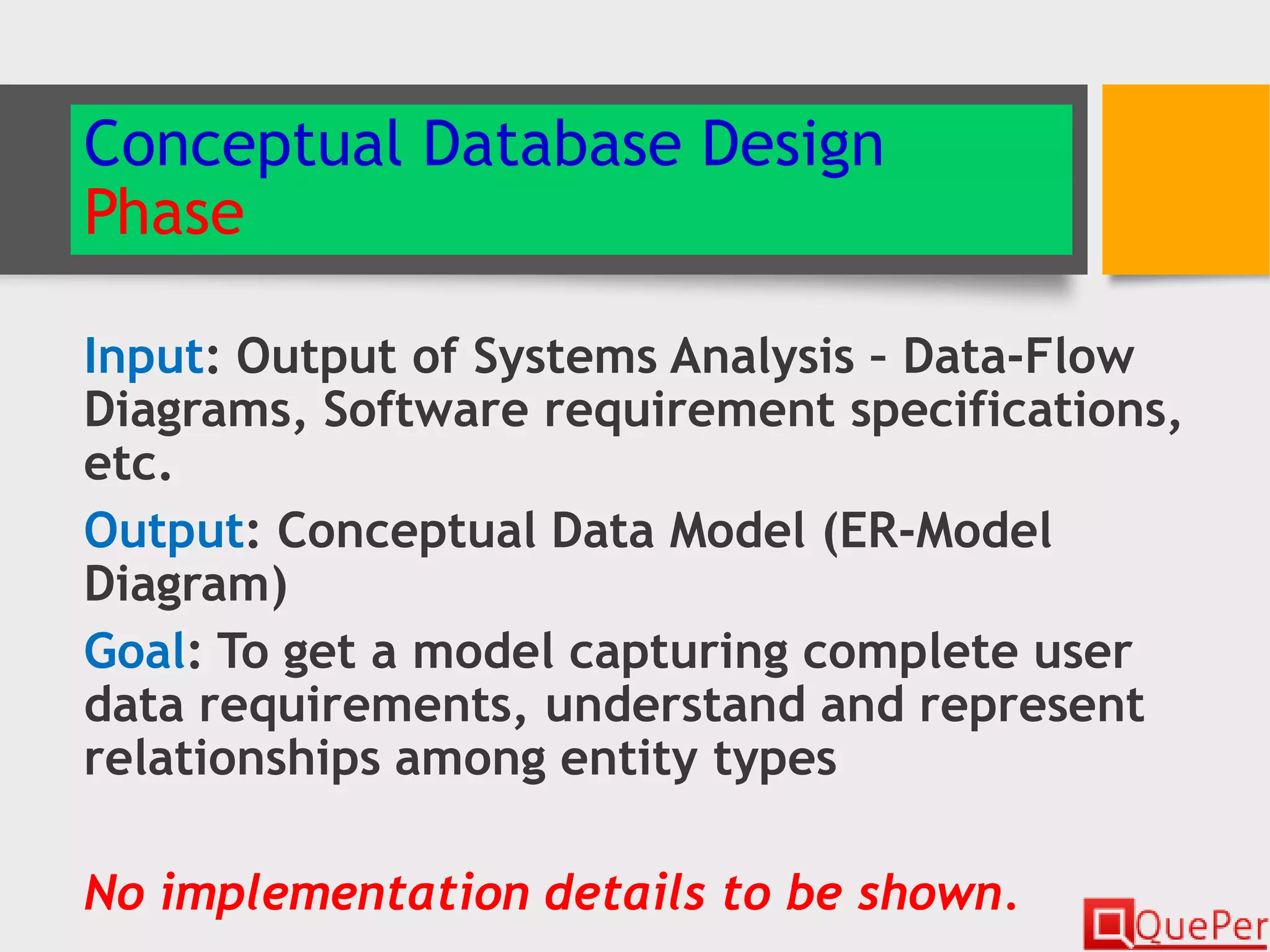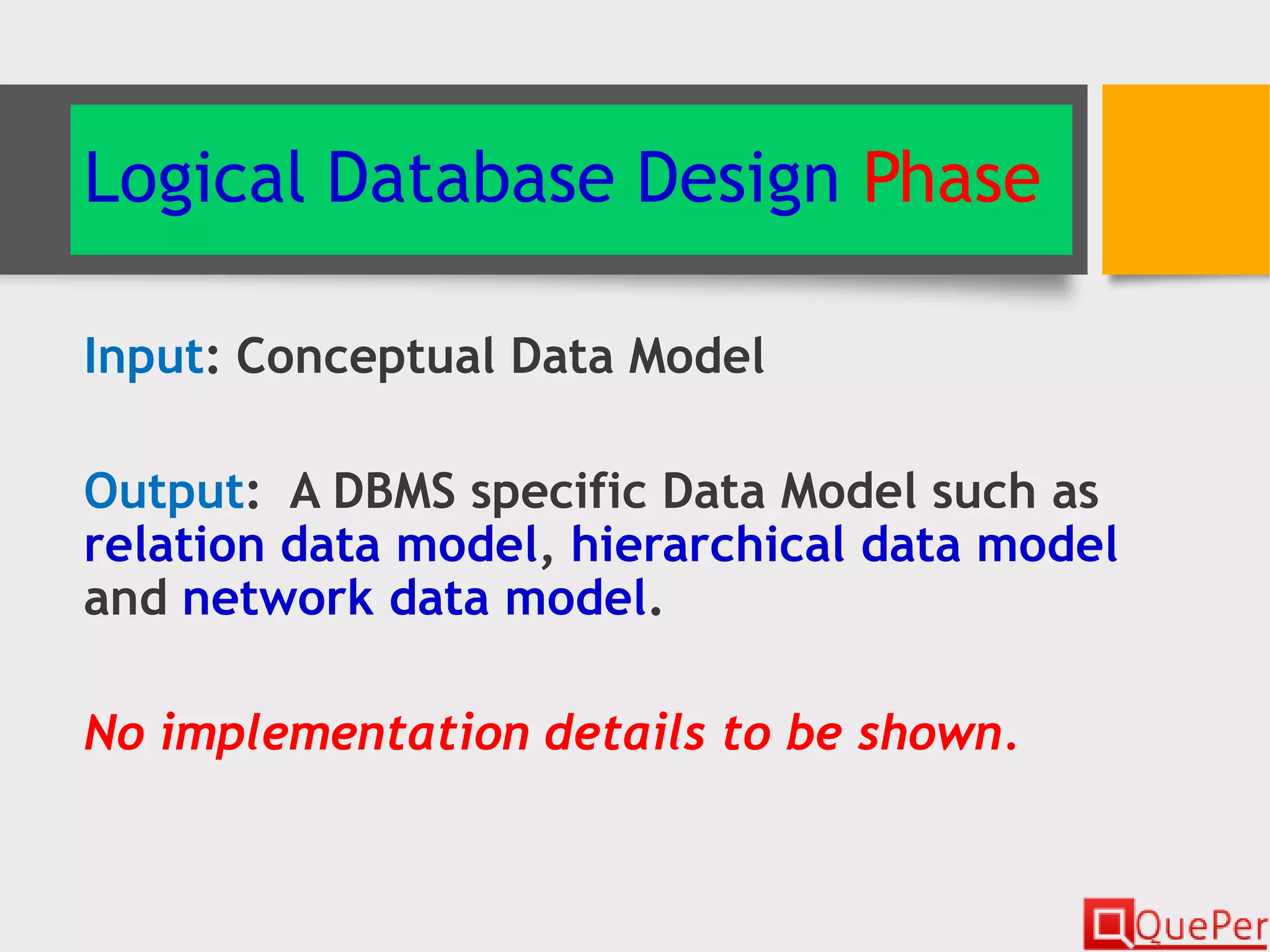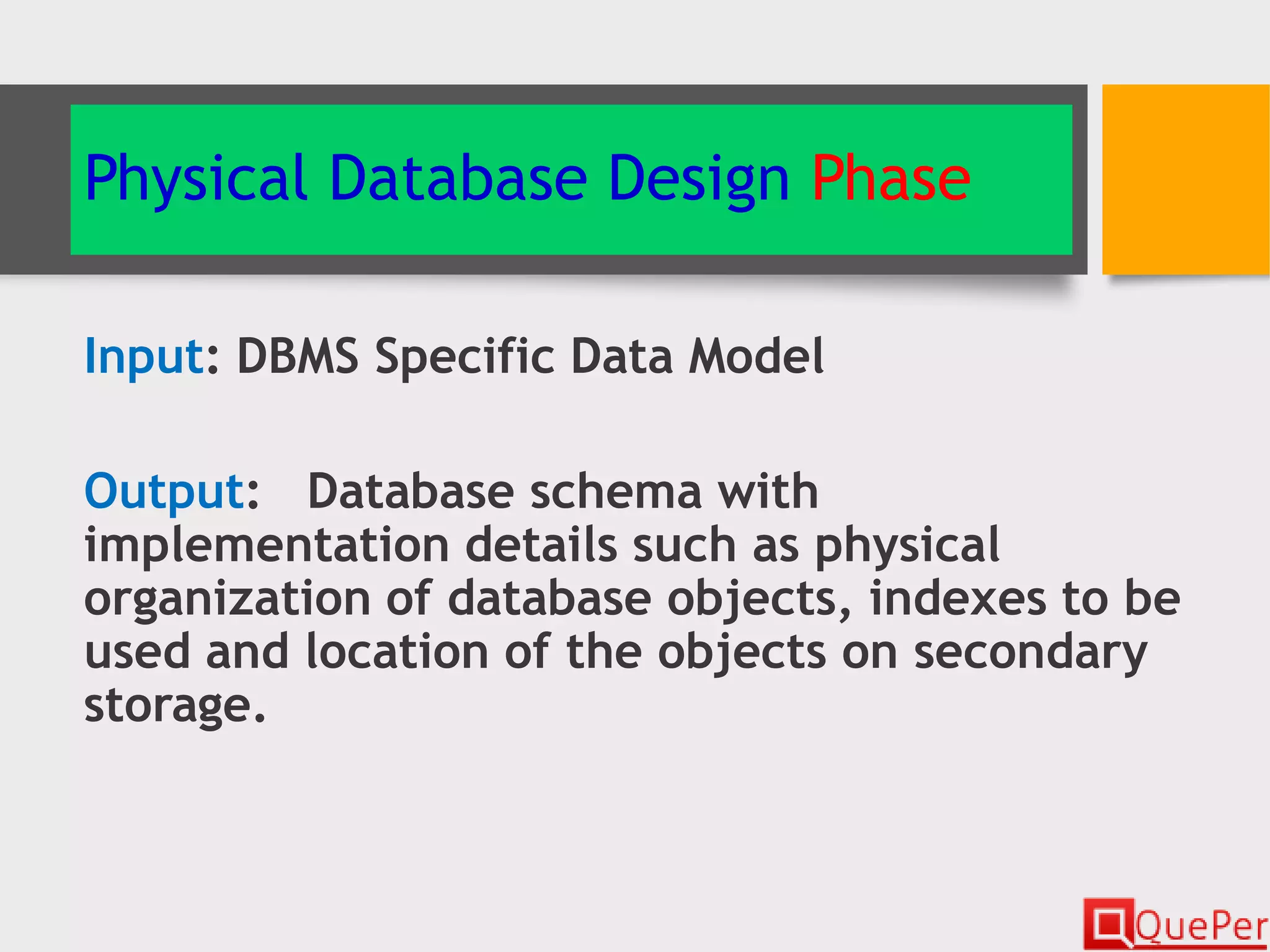This document discusses database design techniques and includes the following key points: - It introduces database design approaches, which include bottom-up and top-down design. These differ in whether they start with attributes or entity relationships. - The three phases of database design are discussed: conceptual, which focuses on user requirements; logical, which develops the data model; and physical, which includes implementation details. - Other topics covered include data modeling, entity relationship modeling, normalization, and the importance of proper database design for application performance, extensibility, data integrity and security.
